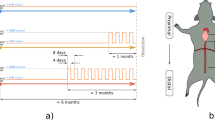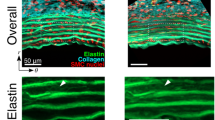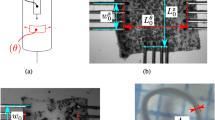Abstract
IN several previous papers we have reviewed aspects of the pathogenesis of arterial lesions in man and in experimental animals with particular reference to the frequently reported increases in histochemically demonstrable material, taken by microscopists to be mucopolysaccharides1–3. In an attempt to determine the significance of this particular finding in the pathogenesis of degeneratory arterial diseases we also studied the vascular lesions induced in rats by Lathyrus odoratus intoxication, in which mucopolysaccharide increases have been noted by several authors besides us4–6. All these investigators considered the increases in mucopolysaccharides to be derived directly from increased rates of lysis of vascular components and/or depolymerization of aortic ground substance, attendant on Lathyrus intoxication. Our own view, based on histochemical and aortic growth studies, is that the lesions in lathyrism may perhaps be due to decreased synthesis of the elastin, and other components of vascular elastic membranes, associated with normal rates of lysis attendant on the growth of the rat's aorta during the period of maximal vascular sensitivity to the toxin2,7.
This is a preview of subscription content, access via your institution
Access options
Subscribe to this journal
Receive 51 print issues and online access
$199.00 per year
only $3.90 per issue
Buy this article
- Purchase on SpringerLink
- Instant access to full article PDF
Prices may be subject to local taxes which are calculated during checkout
Similar content being viewed by others

References
Gillman, T., and Hathorn, M., J. Mount Sinai Hosp., 24, 857 (1957).
Gillman, T., and Hathorn, M., Schweiz. Z. Path. Bakt., 22, 62 (1959).
Gillman, T., Amer. Med. Assoc. Arch. Path., 67, 624 (1959).
Churchill, D. W., Gelfant, S., Lalich, J. J., and Angevine, D. M., Lab. Invest., 4, 1 (1955).
Menzies, D. W., and Mills, K. W., J. Path. Bact., 78, 223 (1957).
Schwartz, C. J., Brit. J. Exp. Path., 40, 44 (1959).
Gillman, T., and Hathorn, M., J. Embryol. Exp. Morphol., 6, 270 (1958).
Grant, R. A., Gillman, T., and Hathorn, M., Brit. J. Exp. Path. (in the press).
Dische, Z., J. Biol. Chem., 167, 189 (1947).
Schwartz, C. J., and Gilmore, H. R., Circulation, 18, 191 (1958).
Gillman, T., and Pillay, R. A., Surg. Gynec. Obstet. (in the press).
Gillman, T., Naidoo, S. S., and Pillay, R. A., J. Endocrinol. (in the press).
Author information
Authors and Affiliations
Rights and permissions
About this article
Cite this article
GRANT, R., HATHORN, M. & GILLMAN, T. Aortic, Serum, Connective Tissue and Osseous Chemistry in Lathyritic Rats. Nature 186, 164–165 (1960). https://doi.org/10.1038/186164a0
Issue date:
DOI: https://doi.org/10.1038/186164a0
This article is cited by
-
β-Aminopropionitrile and the Mucopolysaccharides of Embryonic Chick Aortae
Nature (1967)
-
Haptoglobin- und Coeruloplasmin-Bestimmungen beim experimentellen Lathyrismus der Ratte
Klinische Wochenschrift (1966)
-
Experimenteller Lathyrismus
Zeitschrift f�r Zellforschung und Mikroskopische Anatomie (1963)
-
Seromucoid-Levels in Osteolathyrism in the Rat
Nature (1962)


